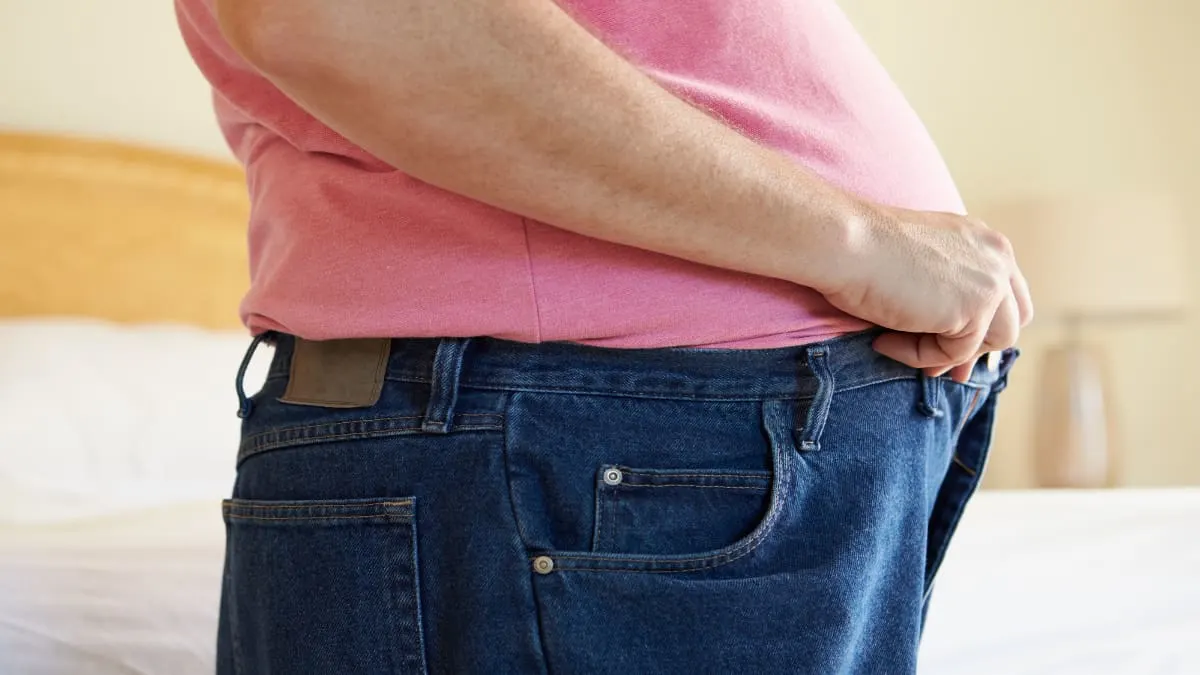If you have a 46 inch waist, then your waistline is quite a bit bigger than average, according to American anthropometric research.
And, while you shouldn’t feel that you’re obliged to look a certain way, there’s no denying that having a 46 in waist is negatively affecting your physical health, as countless studies attest to.
Just make sure that you learn how to take a waist measurement correctly before embarking on your stomach-shedding journey. Getting accurate data will enable you to track your weight loss progress and ensure that your diet and exercise routine are conducive to your goals.
Keep reading to learn what the science has to say about having a 46″ waist, or check out our other articles to learn more about other common waist measurements.
- 40 inch waist
- 41 inch waist
- 42 inch waist
- 43 inch waist
- 44 inch waist
- 45 inch waist
- 47 inch waist
- 48 inch waist
- 49 inch waist
Is a 46 inch waist too big for a woman?
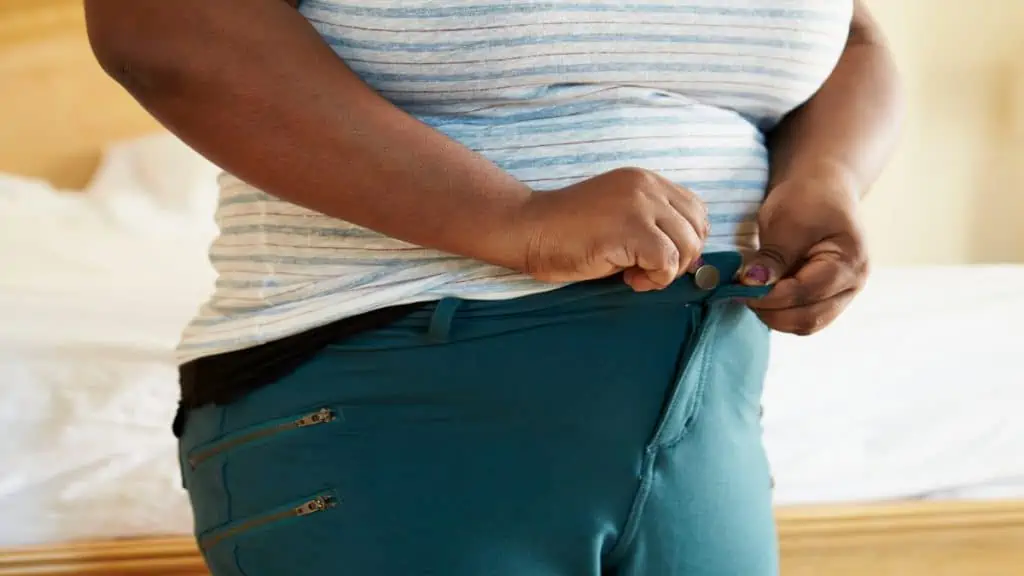
Is a 46 inch waist too big for a woman to live in good health? Unfortunately, yes, a 46 inch waist is too large for a woman to enjoy good long-term health because such a measurement is more than 10 inches above the upper threshold of the recommended waist size for a female.
Of course, some ladies—especially menopausal women—naturally store more fat around their waistline than others. Obviously, certain genetic fat storage predispositions can make shifting your stomach fat more challenging—and more frustrating—if your body is working against you.
Still, any woman can lose weight and improve her health by eating in a calorie deficit, which basically comes down to eating fewer calories than your body needs to maintain its current mass.
Losing inches from your stomach will improve your health because, at an equivalent BMI, those with a larger waist circumference tend to have a higher risk of mortality than those with a smaller waist measurement. [1]
How big is a 46 inch waist for a man?
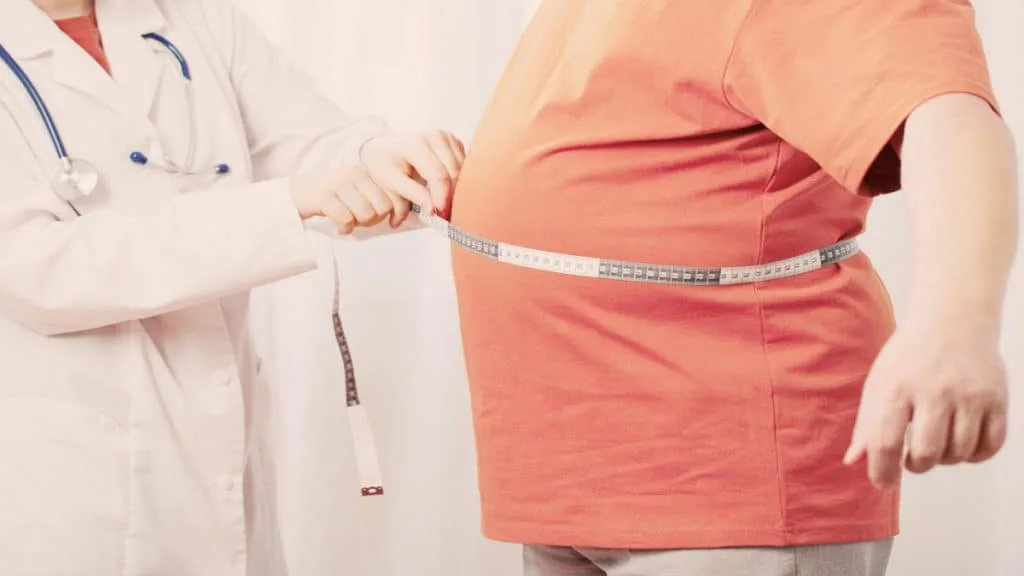
How big is a 46 inch waist for a man? Based on the data, a 46 inch waist is 6 inches bigger than average for a man and far too large for a male to enjoy his best health.
While there’s no need to get yourself into fitness model shape, you can expect a significant improvements in your long-term health and short-term wellbeing by getting your waist below 37 inches (below 35 inches is ideal).
After all, research shows that there’s more to health and obesity than just having a low BMI. Regardless of your BMI, if you have an excessively large waist, then you’re putting your health in jeopardy. [2]
Indeed, when your waist exceeds 40 inches as a man, your risk of conditions like heart disease and diabetes increases dramatically.
How can you get rid of your 46 in waist?
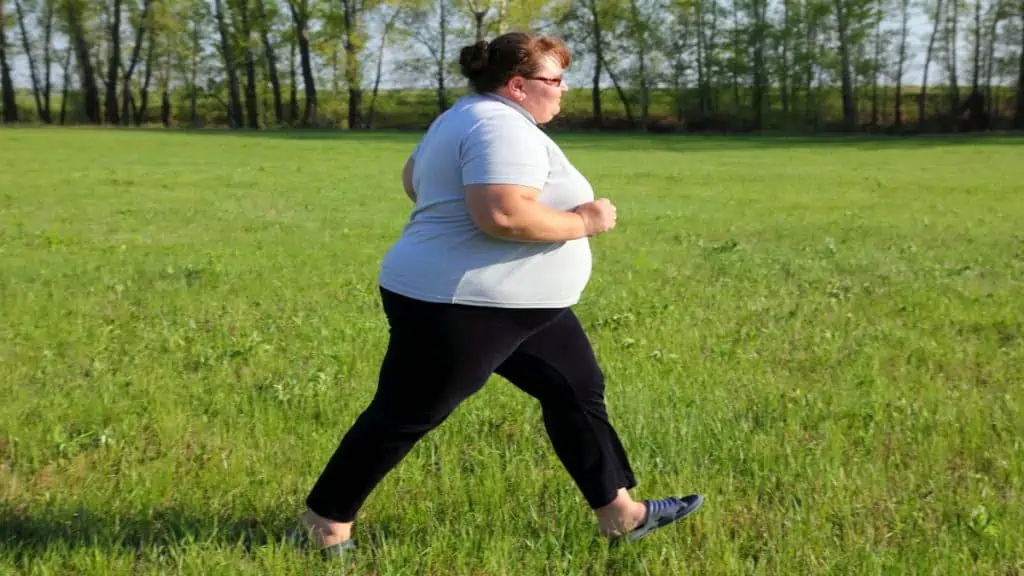
As mentioned, you need to put your body in an energy deficit if you want to lose weight, which typically means decreasing your calorie intake by around 500 calories per day.
In addition, performing moderate and intense exercise, which you can do at home without equipment, will help to torch fat and sculpt your muscles.
Full-body movements like squat jumps, jumping jacks, and burpees really get your heart pumping because they improve your cardiovascular fitness (especially if you do them in a circuit fashion—jumping jacks followed by squats followed by burpees). [3]
Also, make sure to sleep enough. Getting adequate sleep will help you to recover from your workouts and reduce any mental stresses that might come with losing weight.
Conclusion: How bad is it to have a 46 inch waistline?
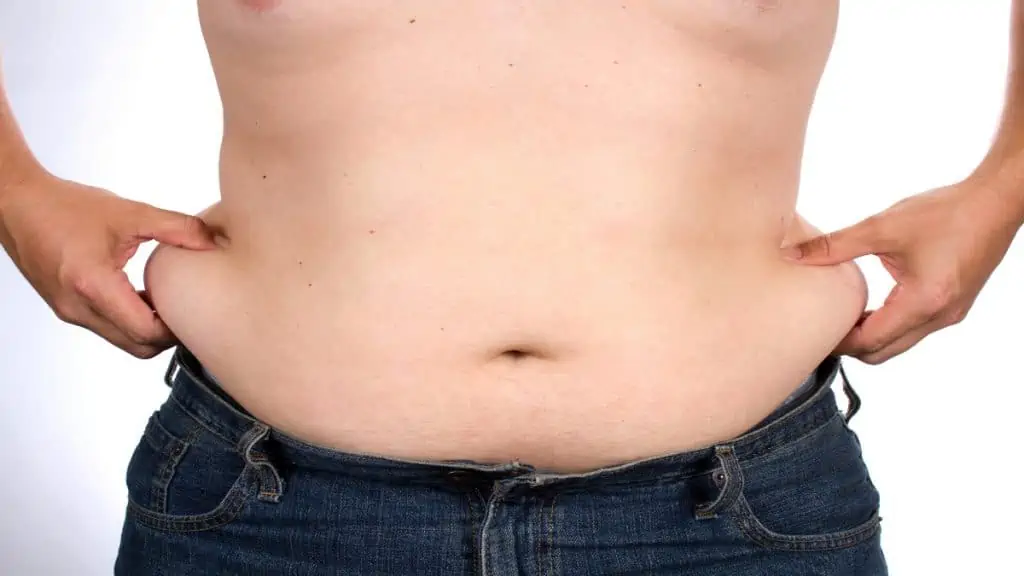
Although you can be perfectly happy with your body at a variety of different weights and body fat levels, you simply can’t achieve peak health while having a 46 inch waist.
So, if you want to improve your health while building a leaner physique (which can be a very rewarding experience), make sure to perform a regular resistance training regime and eat a healthy, whole foods diet.
Steer clear of junk food, as such foods are almost always devoid of micronutrients. Instead, eat lean meats, fish, beans, and yogurt for protein, all of which will help to keep cravings at bay by making you feel nicely satiated.
You’ll also need enough healthy fats (think salmon, nuts, dairy, and avocados) to maintain healthy hormone levels. The rest of your calorie intake can be filled with carbohydrates to fuel your workouts, which you should be performing at least 3 times per week in addition to consuming a calorie deficit diet.
References
- Bigaard, J., Tjønneland, A., Thomsen, B. L., Overvad, K., Heitmann, B. L., & Sørensen, T. I. (2003). Waist Circumference, BMI, Smoking, and Mortality in Middle-Aged Men and Women. Obesity Research, 11(7), 895–903. https://doi.org/10.1038/oby.2003.123
- Ardern, C. I., Janssen, I., Ross, R., & Katzmarzyk, P. T. (2004b). Development of Health-Related Waist Circumference Thresholds Within BMI Categories. Obesity Research, 12(7), 1094–1103. https://doi.org/10.1038/oby.2004.137
- Lawler, M., & Mackenzie, S., MD PhD. (2020, August 13). The Best Fat-Burning Exercises for at Home and the Gym. EverydayHealth.Com. https://www.everydayhealth.com/fitness/the-best-fat-burning-exercises-for-at-home-and-the-gym/

